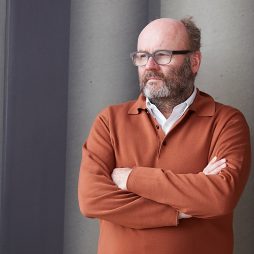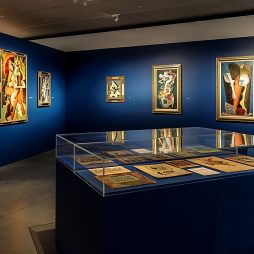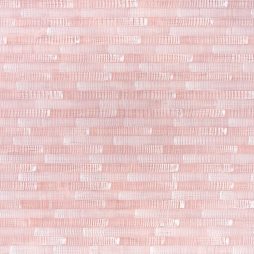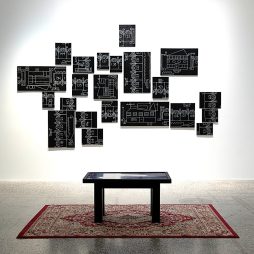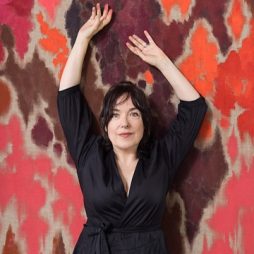Untitled: Andy Quilty + a Prisoner
‘Untitled’ is a joint exhibition between West Australian artist Andy Quilty and a long-term inmate at a West Australian prison currently undertaking a Masters in Fine Art (Curtin University JETA program). Spanning drawing, digital imagery and installation, the exhibition interrogates the politico-cultural implications of societal attitudes towards the incarcerated. Approaching this issue through the synecdochal lenses of ‘insider’ and ‘outsider’, the artists explore the impacts of micro-social prison environments on the physical and psychological wellbeing of individuals, prompting us to reconsider entrenched assumptions about punishment, justice and incarceration.
In a series of digital prints, the prisoner – who must remain anonymous – has taken Quilty’s portraits and digitally erased and reworked them, producing spectral works from within the prison walls that haunt the rooms of Heathcote Museum and Gallery. The prints are symbolic of bureaucratic effacement of the individual, as prisoners endure a kind of existential exile from the collective consciousness of society. The prisoner reflects, ‘my work deals with the pseudo-identity of the prisoner wearing metaphoric masks and veils, and questions the objectification process of individuals as anti-portraits employed to examine a prisoner’s experience when alienated and isolated in a punitive artificial environment.’ He continues, ‘these images are an attempt to visually portray the phenomena of being confined to an artificial environment, and how isolation from the freeworld impacts on my ontological make-up. Experiencing life as an object, defined, interpreted, categorised and controlled by the interests of others … Within the carceral boundary, restricted movement limits my depth perception of being in the world and creates a vacuum where nothing has any more effective pull than anything else. This can be viewed as a ‘Ganzfeld Effect’ where objects in space flatten out to become non-descript monotonous fields of vision, effacing the distinctions that would otherwise serve as anchors or signposts for the emergence of a sense of place.’
Quilty has, in turn, pared back his own materials to mirror the conditions of the prisoner’s art, using blacks and whites rather than the colourful hues of his recent output. About this new approach, Quilty reflects, ‘I made a conscious choice to limit myself to the same simple materials available to the prisoner. This is manifest through de-saturated drawings as opposed to the large-scale hyper colour abstract paintings I had been making prior to this show. I was conscious to only use processes of making that would exist in the prison space – my use of found objects mirroring the prisoner’s use of everyday material such as his prison passes.’
Both artists hope to shine a light into the shadows of incarceration. The prisoner elucidates, first hand, the crushing psychological effects of imprisonment in a country where the number of inmates is increasing amidst decreased funding and rehabilitation outlets. ‘As our prisons expand to reflect a warehouse function rather than a societal service, this exhibition is timely to reflect on the deleterious effects caused by isolating prisoners in harsh and hostile artificial environments for long periods of time’, remarks the prisoner. ‘Highlighting how the prison environment impacts on the individual from an insider’s perspective, it may be possible to develop a broader awareness and open dialogue to alternative ways to lessen the damage caused to prisoners by the environments they are housed in. Ultimately it is advantageous to have prisoners released back to society less damaged than when they came in.’
Quilty hopes that the exhibition will generate dialogue and dislodge assumptions about people inside the walls of our prisons: ‘Australians have a historically complicated relationship with ideas of criminality and justice. Current government policies in Western Australia favour hyper-incarceration, suggesting a society focusing on punishment and vengeance rather than rehabilitation or early intervention. The loss of one’s freedom through incarceration is punishment enough, yet Australians demand that prisoners be further punished through minimising their opportunities within the jail. There are not enough resources focused on greater education and training or work opportunities in jails. Evidence shows increasing these opportunities leads to lower recidivism rates, meaning taxpayers save in the long run, though it would appear that empathy and solutions beyond building more jails do not win votes … I hope viewers get a sense of how critical the state of hyper-incarceration is in WA so that a more constructive and empathetic dialogue might begin to happen. I also think that the very existence of this show and the strength of my collaborator’s work demonstrates undeniable evidence of the value of education opportunities in the prison space’.
Andy Quilty is represented by Linton & Kay Galleries, WA
EXHIBITION
Untitled: Andy Quilty & an unnamed artist
Heathcote Museum and Gallery, WA
4 May – 10 June 2018










